
Not mobile friendly (why)
Hi! Yes, this is a Arado 234th

The Arado Ar 234 Blitz (English: lightning) is a jet-powered bomber designed and produced by the German aircraft manufacturer Arado. It was the world's first operational turbojet-powered bomber, seeing service during the final years of the Second World War.
Development of the Ar 234 can be traced back to the latter half of 1940 and the request to tender from the Ministry of Aviation to produce a jet-powered high-speed reconnaissance aircraft. Arado was the only respondent with their E.370 design. While its range was beneath that of the Ministry's specification, an initial order for two prototypes was promptly issued to the company, designated Ar 234. While both of the prototypes had been mostly completed prior to the end of 1941, the Junkers Jumo 004 turbojet engines were not available prior to February 1943. Due to engine unreliability, the maiden flight of the Ar 234 V1 was delayed until 30 July 1943. In addition to the original reconnaissance-orientated Ar 234A, the fast bomber Ar 234B model was developed in response to a request by the Ministry of Aviation. Due to a lack of internal space in the relatively slender fuselage, bombloads of up to 1,500 kg (3,300 lb) had to be carried on external racks rather than in internal bomb bays.
The Ar 234 was produced only in small numbers, despite plans for production of 500 per month by late 1945. This was partly due to a lack of available jet engines and other critical materials, for which the aircraft had to compete with other types, such as the Messerschmitt Me 262. Several models were proposed, with alternative engines, cockpit improvements, and adaptations for other roles, including as a night fighter. In late 1944, aerial reconnaissance missions over enemy territory commenced. The Ar 234 was almost entirely used to perform such reconnaissance missions and it was in this capacity that it became the last Luftwaffe aircraft to overfly the United Kingdom during the war, in April 1945.[1] In its capacity as a bomber, the most prominent use of the Ar 234 was the repeated attempts to destroy the Ludendorff Bridge at Remagen between 7 and 17 March 1945. Many airframes were destroyed or captured on the ground due to a lack of serviceable engines or fuel.
Ar 234B
At the request of the Ministry of Aviation, Arado also produced a pair of prototypes configured as fast bombers, as the Ar 234B. On 12 March 1944, the first of these, Ar 234 V9, performed its first flight. It was the first to feature a fully retractable tricycle landing gear, with the main gear retracting forward into the mid-fuselage, and the nose gear retracted rearwards.[17][18]
The Ar 234's slender fuselage was largely filled with fuel tanks, leaving no room for an internal bomb bay, which was carried on external racks. The forward-set cockpit did not provide the pilot with any visibility to the rear, thus the rear firing guns it was fitted with were aimed through a periscope, mounted on the cockpit roof. This periscope could also be flipped forwards for dive-bombing however, its usefulness was impaired by the scope's image being flipped upside down.[19] The defensive fixed rear gun system was found to be useless by the pilots, and was omitted in the Ar 234B.[20] The aircraft was widened slightly at mid-fuselage and the central fuel tank was omitted to fit in the main landing gear, while enlarged forward (1,800 L (400 imp gal; 480 US gal)) and aft (2,000 L (440 imp gal; 530 US gal)) fuel tanks compensated for its removal.[21]
During flight testing, while carrying its maximum bombload of three SC 500 bombs, the Ar 234 V9 could reach 672 km/h (418 mph) at 5,000 m (16,000 ft),[22][23] faster than any other Luftwaffe bomber at the time. The normal bomb load consisted of a pair of 500 kg (1,100 lb) bombs suspended from the engines or one large 1,000 kg (2,200 lb) bomb semi-recessed in the underside of the fuselage, while the maximum bombload was 1,500 kg (3,300 lb). It could also carry the heavier BT 1400 (1,510 kg (3,330 lb) unpowered bomb-torpedo), although the ground clearance was limited. If this munition was deployed, the aircraft's fuel capacity was noticeably reduced while rocket assistance was needed for takeoff.[citation needed] The pilot would engage the autopilot while using the bomb sight, which was interfaced with the autopilot to adjust the aircraft's flight path directly.[24]
Production lines were being set up while the 20 B-0 pre-production aircraft were being delivered, by the end of June. Production was slow, as Arado was to maintain production to compensate for other factories bombed during the USAAF's "Big Week",(20-25 February 1944),[20] in addition to an ongoing license-construction of the Heinkel He 177 heavy bomber.[25] Between mid-1944 and the end of the conflict, only 210 aircraft were built.[3] During February 1945, production switched to the C variant. German plans were for production to reach 500 per month by November 1945.[citation needed]
In addition, some Ar 234 B-2 airframes were modified to serve as night fighters.[26] Designated Ar 234B-2/N and code named Nachtigall (Nightingale), these were fitted with FuG 218 "Neptun" VHF-band radar, with a reduced-dipole length version of the standard Hirschgeweih eight-dipole element, VHF-band transceiving AI radar antenna system, and carried a pair of forward-firing 20mm MG 151/20 autocannon within a Magirusbombe conformal gun pod on the rear fuselage hardpoint. The radar system was operated by a second crew member in a cramped compartment in the rear. Two of these served with Kommando Bonow, a Luftflotte Reich experimental test unit. Operations began in March 1945, but the aircraft was unsuitable for night fighting and no kills

Ag1 - Openable canopy
Ag2 - Drag chute
VTOL Down - Flaps






1st - Livery based on this photo:

2nd - Yea, its in someways can be inaccurate
3rd - i completely forgor last note

Specifications
Spotlights
- MrCOPTY 9 months ago
General Characteristics
- Created On Windows
- Wingspan 48.2ft (14.7m)
- Length 43.4ft (13.2m)
- Height 14.3ft (4.4m)
- Empty Weight N/A
- Loaded Weight 6,120lbs (2,776kg)
Performance
- Power/Weight Ratio 1.542
- Wing Loading 17.2lbs/ft2 (84.1kg/m2)
- Wing Area 355.2ft2 (33.0m2)
- Drag Points 728
Parts
- Number of Parts 313
- Control Surfaces 9
- Performance Cost 1,597

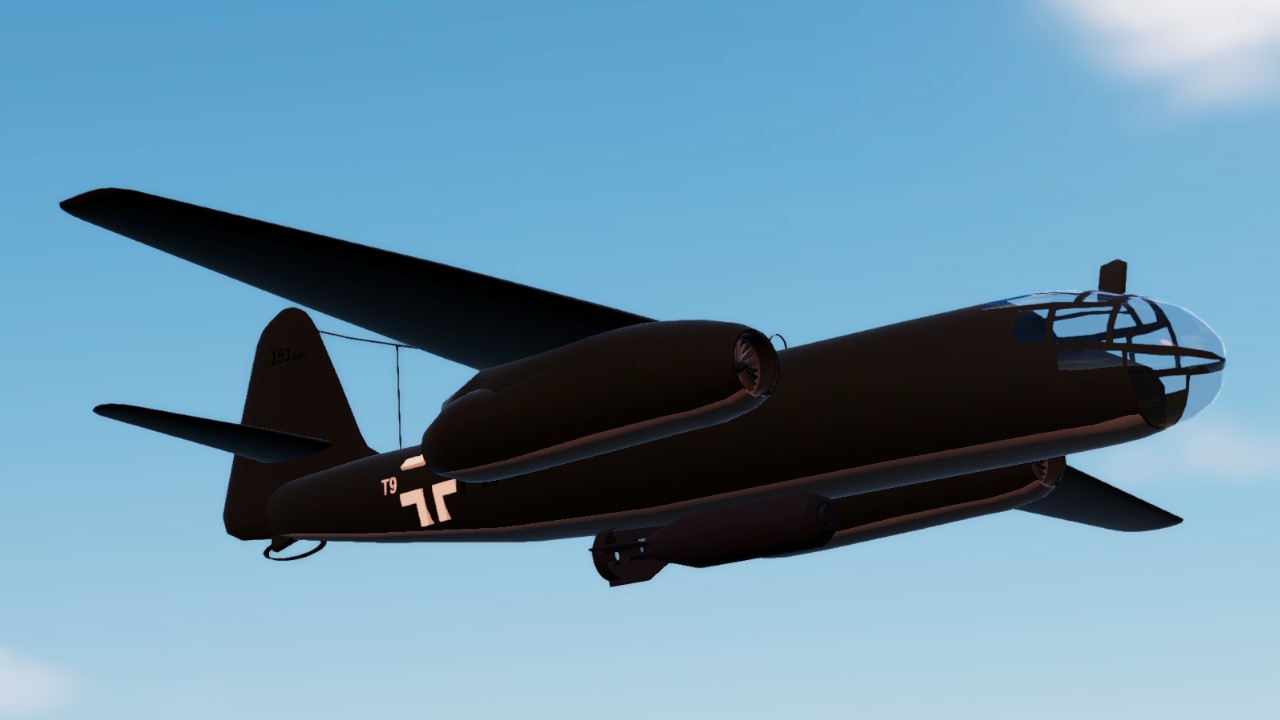
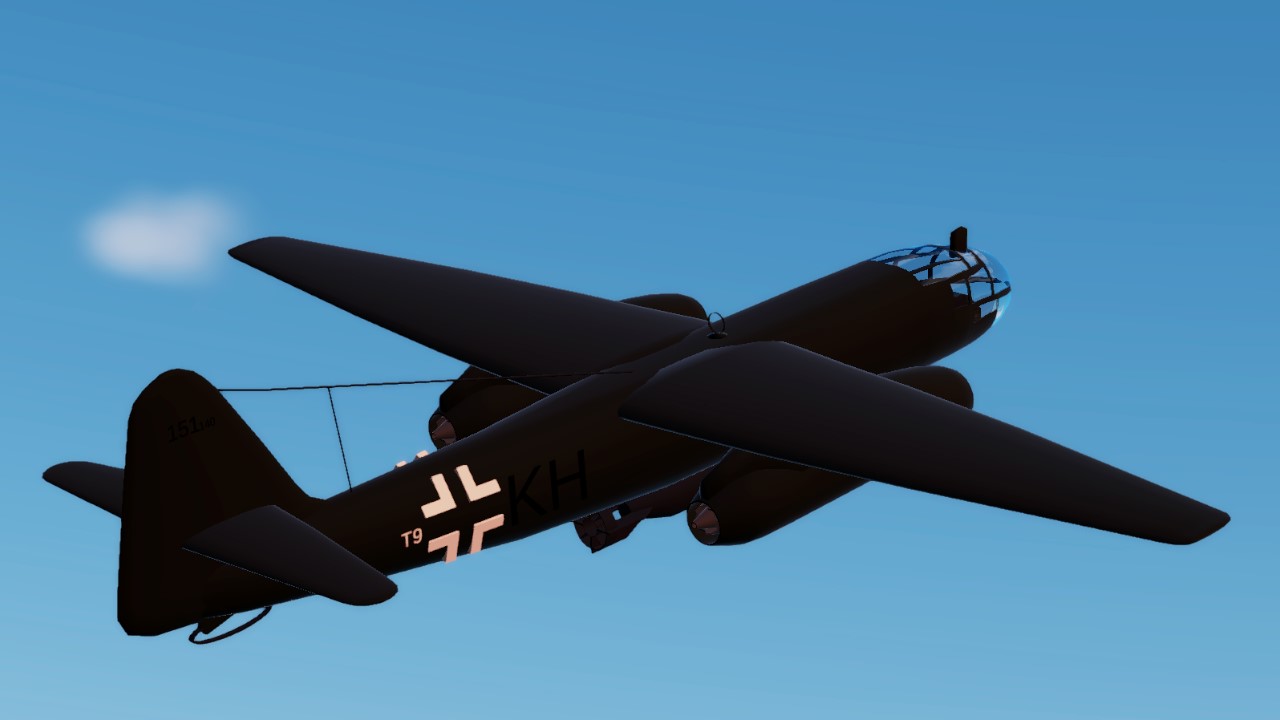
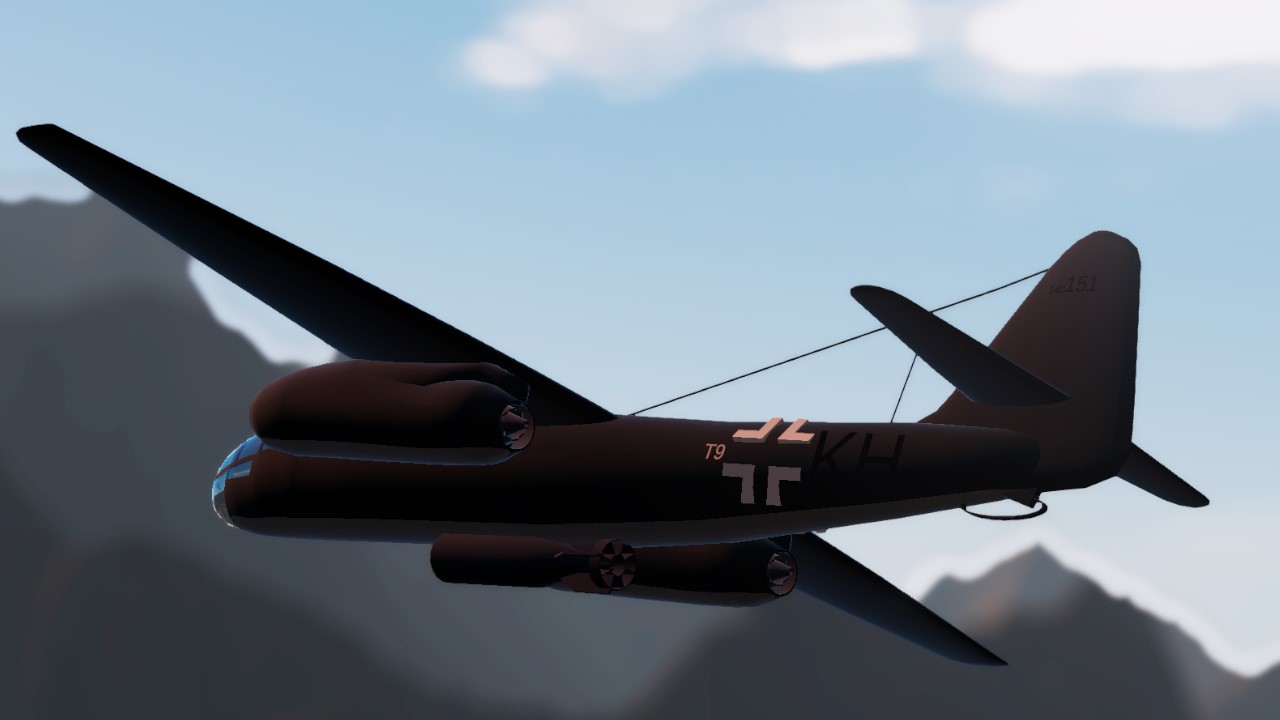
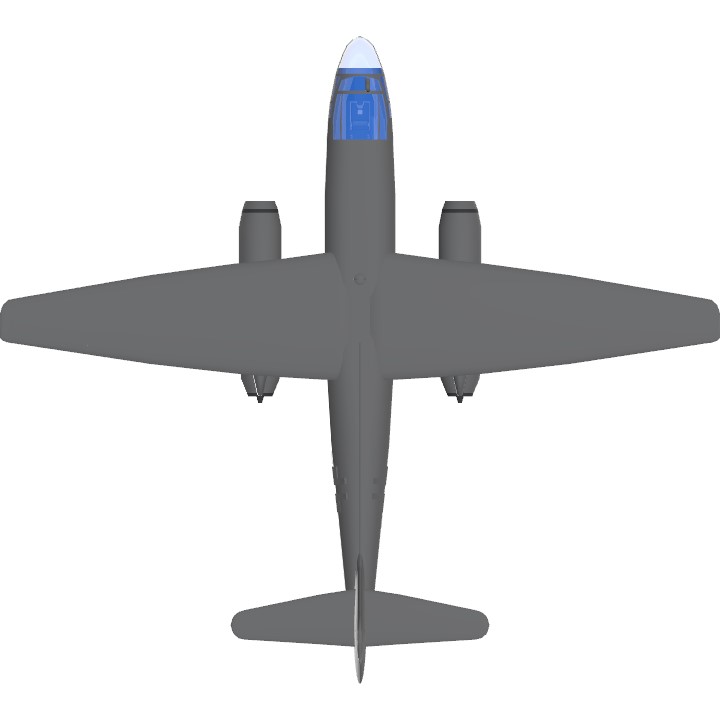
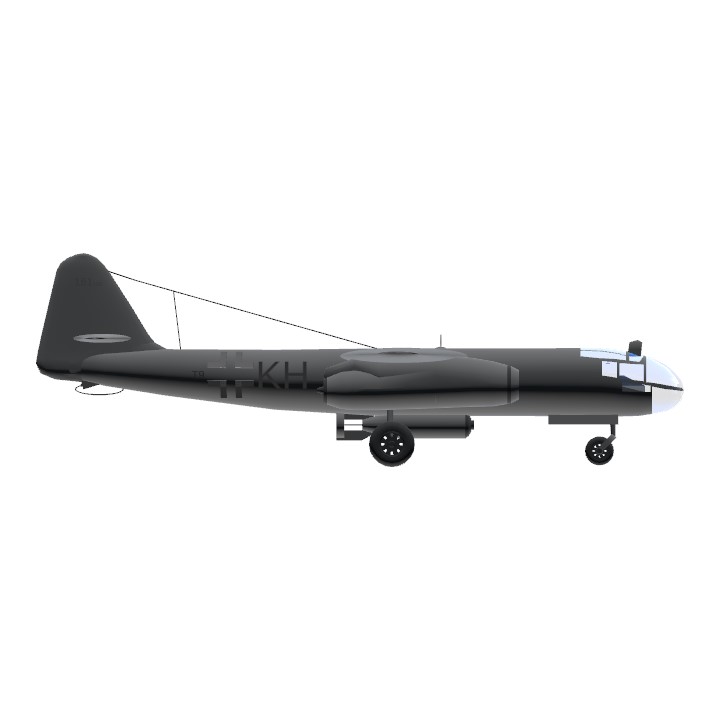
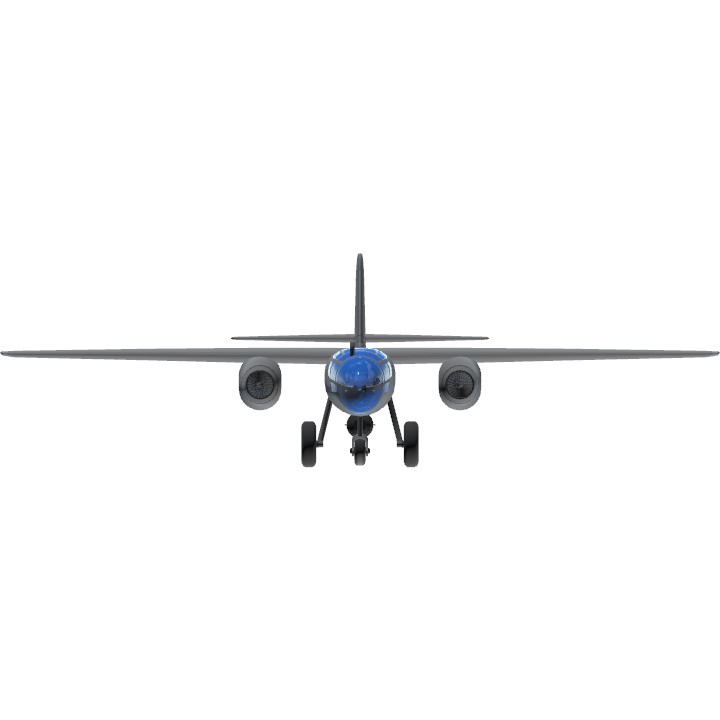
Blitz tags:
@001
@DatFiat126Fan19
@MrCOPTY
@ZerkkOtakuGuy
@Pan
@Omoriboy
@Bryan5
@florky
@ThatRandomCouchPotato
@Neruneten21
@RepublicOfCursedPlanes "ok lol"
@Zhixunlin23 true for most the time for me
WOW
good
AUF DER HEIDE-
Great build .
@Erc90F4RU for me any thing below 500 parts is mobile friendly
@MrCOPTY for me mobile friendly is <302 parts
@FlatterGuy > 200 not mobile friendly